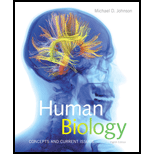
Introduction:
Predictions and hypotheses are often tested using carefully designed experiments. These experiments need to be controlled experiments. This essentially means that no other variable, apart from the one being tested for, must affect the outcome. The variables involved can be independent variables or dependent variables. Independent variables are those which stand alone and are not changed by the variable we wish to measure. These include time, age, distance, drug treatment, and no drug treatment. Dependent variables are those which are dependent on an independent variable. Examples are growth or blood pressure. Experiments are designed in a way so that only one independent variable is manipulated or controlled.
An experiment designed to test the effectiveness of a drug would start with picking a large number of suitable subjects for that experiment. These are then randomly divided among experimental and control groups. Everything else for both the groups is kept exactly the same apart from the controlled variable, which is the administration of the drug. Experimental group would get the drug and control group would receive an identical pill but with no drug which is the placebo. The results of the two groups are then compared to see the effect of the drug.
Want to see the full answer?
Check out a sample textbook solution
Chapter 1 Solutions
Human Biology: Concepts and Current Issues Plus Mastering Biology with Pearson eText -- Access Card Package (8th Edition)
- Give an example for any biopharmaceutical produced by Recombinant DNA Technology (except insulin). Answer option a,c,d a. What is the name of the drug/trademark?b. Write its mode of action.c. List the experimental steps under the laboratory conditionsd. List the production steps in the factoryarrow_forwardUsing a schematic diagram, illustrate the process of the following stages of drug development:A. Method of Drug Discovery: Rational Design ProcessB. Pre-Clinical TrialsC. Clinical Trialsarrow_forwardPropose an outline on how you would isolate caffeine from tea leaves. It should look like this: A. Objectives a. ?? b. ?? B. Background of the Study a. ?? b. ?? c. ?? d. ?? C. Methodology a. Isolation Technique - ?? b. Quantification Technique - ??arrow_forward
- What is Drugbank? https://go.drugbank.com/ A.A compendium of drugs that are commercially available. B.Drug Gene Interaction database C.FBI storage locker for illegal drugs D. A database of pharmaceutical knowledge about drugs.arrow_forwardWhich of the following statements in reference to the Policy on Manufacturing and Compounding Products in Canada would be considered manufacturing of a sterile product? a. There is specific authorization for a compounded product on the clinical trial application. b. The compounded product is produced and sold to a third party. c. The compounded product is a formulation that is legitimately different from a similar commercial product. d. The compounded product demonstrates that a patient–health care professional relationship exists.arrow_forwardThe following are words used in animal testing and its alternative methods. Define the following terms - a. Vivisection b. Optogenics c. In vivo d. In vitro cell culture e. In silico computer simulation f. Pharmacokinetics g. Pharmacodynamics h. Tissue culture i. Phototoxicity j. 3D cell culturesarrow_forward
- describe the experiments and results (using a mouse model) demonstrating the effectiveness of the drug.arrow_forwardA) Identify the INDEPENDENT variable in the experimental setup shown in the diagram. B) Describe at least two possible DEPENDENT variables that could be used to evaluate the results. C) List at least 3 variables that should be controlled in this experiment.arrow_forwardWhich of the following would NOT be a reason that a clinical trial is unethical? a) Researchers are in a state of equipoise for the two treatments under study b) The sample size is very small c) The benefits to participants are outweighed by the potential risks d) The researchers already know that one treatment is better than the otherarrow_forward
- Nanotechnology can provide alternatives to early detection of cancer cells, drug delivery, and injectable vaccines that to this day rely on healthcare professionals to administer. What are the benefits and cost of it? Which do you think is more equitable in its impact? (benefit or cost) Why?arrow_forwardList 3 possible benefits from this scenario: "Nanotechnology can provide alternatives to early detection of cancer cells, drug delivery, and injectable vaccines that to this day rely on healthcare professionals to administer." Note: BENEFITS are the advantages, good effects/impacts, or profit resulting from the scenario.arrow_forwardIn the discovery of new drugs, the chemical and physical properties of a molecule are very important to be determined. All of the following are physical and chemical properties that are important in drug discovery EXCEPT….A. route of administrationB. fat/water partitionC. molecular steric hindranceD. pHE. pKa Secretion of acid ions from gastric acid, is one of the drug distribution processes by...A. Passive diffusion with facilitiesB. passive diffusionC. dissolves in lipids that make up the membraneD. pinocytosisE. active diffusionarrow_forward
 Human Anatomy & Physiology (11th Edition)BiologyISBN:9780134580999Author:Elaine N. Marieb, Katja N. HoehnPublisher:PEARSON
Human Anatomy & Physiology (11th Edition)BiologyISBN:9780134580999Author:Elaine N. Marieb, Katja N. HoehnPublisher:PEARSON Biology 2eBiologyISBN:9781947172517Author:Matthew Douglas, Jung Choi, Mary Ann ClarkPublisher:OpenStax
Biology 2eBiologyISBN:9781947172517Author:Matthew Douglas, Jung Choi, Mary Ann ClarkPublisher:OpenStax Anatomy & PhysiologyBiologyISBN:9781259398629Author:McKinley, Michael P., O'loughlin, Valerie Dean, Bidle, Theresa StouterPublisher:Mcgraw Hill Education,
Anatomy & PhysiologyBiologyISBN:9781259398629Author:McKinley, Michael P., O'loughlin, Valerie Dean, Bidle, Theresa StouterPublisher:Mcgraw Hill Education, Molecular Biology of the Cell (Sixth Edition)BiologyISBN:9780815344322Author:Bruce Alberts, Alexander D. Johnson, Julian Lewis, David Morgan, Martin Raff, Keith Roberts, Peter WalterPublisher:W. W. Norton & Company
Molecular Biology of the Cell (Sixth Edition)BiologyISBN:9780815344322Author:Bruce Alberts, Alexander D. Johnson, Julian Lewis, David Morgan, Martin Raff, Keith Roberts, Peter WalterPublisher:W. W. Norton & Company Laboratory Manual For Human Anatomy & PhysiologyBiologyISBN:9781260159363Author:Martin, Terry R., Prentice-craver, CynthiaPublisher:McGraw-Hill Publishing Co.
Laboratory Manual For Human Anatomy & PhysiologyBiologyISBN:9781260159363Author:Martin, Terry R., Prentice-craver, CynthiaPublisher:McGraw-Hill Publishing Co. Inquiry Into Life (16th Edition)BiologyISBN:9781260231700Author:Sylvia S. Mader, Michael WindelspechtPublisher:McGraw Hill Education
Inquiry Into Life (16th Edition)BiologyISBN:9781260231700Author:Sylvia S. Mader, Michael WindelspechtPublisher:McGraw Hill Education





